It’s our hope that each of you will enjoy and appreciate this article we present about these Fabulous Fungi Around the Globe. It was certainly our true pleasure to gather the various information for you. May it provide you with both education and increased awareness.
Certainly, these few species listed here represent only a portion of the related marvels found throughout the entirety of the earth. It’s our belief, though, that they serve as excellent examples of their form of life. We also invite you to check out some of our other articles.
Jelly Ear
Jelly Ear Facts
- Leading off this article about Fabulous Fungi Around the Globe we present the creation of evolution distinctively named the Jelly Ear.
- This highly distinctive variety of fungus most often goes by the simple, yet descriptive, common name used herein. Like many species, though, it also bears other, alternate names. These include such terms as the Jew’s Ear and the Judas’s Ear.
- Among professionals, such as researchers, however, it’s better known by its technical name. That term, though, as such things do, remains quite difficult for the layperson to pronounce. That’s because it holds the technical name of Auricularia auricula-judae.
- It naming took a circuitous path. The noted Swedish botanist, Carl Linnaeus recorded the first known description of the mushroom, in 1753. Later, however, the French botanist Jean Bulliard renamed it. It received the name it presently holds in 1822.
- The Jelly Ear appears to presently be maintaining a population base that’s both stable and sufficient. This fortunate fact further seems to hold true across the entirety of its native range. The IUCN, therefore, presently has no listing for it on its Red List.
- The marvel of Nature nevertheless must be considered as facing at least some threats to its continued existence. These, though, remain the same most species face. Habitat loss certainly qualifies. Its greatest threat, however, likely consists of climate change.
Jelly Ear Physical Description
The Jelly Ear is an intriguing variety of fungus. It fully merits the attention it garners from those who encounter it. It further does so due to several factors. Its sheer size qualifies as one of those. Though by no means the largest, it’s an above-average sized specimen.
Individual specimens sometimes attain adiameter of as much as 3.5 in (9 cm). Most, however, tend to remain slightly smaller than that. It also achieves a thickness of up to 0.12 in (3 mm). Each specimen, though, tends to develop in its own unique exact shape.
But, overall examples of the species develop as a shape often compared to that of a floppy human ear. That, therefore, serves as the origin of the most often used name. Some examples, though, occasionally display a different shape. These typically appear cup-shaped.
Most specimens of the Jelly Ear attach themselves laterally to a surface. This means these do not possess a stalk. A small percentage of them, do, however, develop this feature. Among these less common forms, the stalk nevertheless remains extremely short in length.
While living, the body displays a tough, gelatinous texture that’s slightly elastic to the touch. The majority of the upper surface also displays a reddish-tan shade. This same part of the fungus also often possesses a light purplish hue. It also frequently manifests tiny gray hairs.
- Kingdom: Fungi
- Phylum: Basidiomycota
- Class: Agaricomycetes
- Order: Auriculariales
- Family: Auriculariaceae
- Genus: Auricularia
- Species: A. auricula-judae
Jelly Ear Distribution, Habitat, and Ecology
The remarkable Jelly Ear evolved as native to an extremely large swathe of the globe. Not surprisingly, that same region’s already well known for its abundance of intriguing flora and fauna. That’s because this wonder of Nature developed natively in what’s now Europe.
In fact, the fascinating fungus appears in virtually all parts of this beautiful continent. Intriguingly, however, evidence additionally indicates that it never existed naturally beyond this region. Related species live in other parts of the world, but not this specific fungus.
It also displays decided preferences for where it appears. This primarily consists of areas of temperate forest. The natural wonder even manifests preferences for which types of hosts. This consists almost exclusively of several species of deciduous trees and shrubs.
This intriguing product of evolution most commonly develops on elder trees. Other, less popular, hosts include spindle, ash, beech, and sycamore. Conifers, though, rarely play host to this particular fungus. It also prefers to develop on older, or even dead, branches.
The Jelly Ear most frequently develops as a solitary species. It nevertheless does occasionally develop in small clusters. Fascinatingly, it also makes appearances throughout the year, even in winter. Its numbers do usually tend to be fewer during that season, though.
Like other fungi, this unique looking variety reproduces via the spreading of spores. In its particular case, however, it ejects these from the underside of the fruit body. It also produces and ejects as many as several hundred thousand of these spores per hour!
Indigo Milk Cap
Indigo Milk Cap Facts
- The next species chosen for inclusion in this compendium of Fabulous Fungi Around the Globe is the aptly-named Indigo Milk Cap.
- Most frequently known by this fully appropriate common name, this brilliantly colored mushroom easily dazzles the eye. It also has several other general names, though. These alternate terms include the blue milk mushroom and indigo lactarius.
- Scientific professionals, however, typically refer to the fungus by its official scientific name. That’s the relatively simple term, as such things go, of the Lactarius indigo. Regardless of which term one chooses to employ, though, it’s a marvel of evolution.
- The remarkable species received its present name at the hands of the respected German-American mycologist, Lewis David de Schweinitz. This noted researcher assigned it the term it’s now known by as a result of reclassification. This he did in 1838.
- The first known recognition of it as a separate and distinct species, however, took place in the year 1822. The same renowned researcher that later changed the name due to reclassification also made the first formal acknowledgement of the incredible fungus.
- The intriguing Indigo Milk Cap appears to be maintaining a population base that’s both sizeable and stable. This further seems to hold true throughout the entirety of its natural range. The IUCN, therefore, has no listing for it on the organization’s Red List.
- Nevertheless, that status could change in the near future. That’s because, like most species, it now faces several threats to its continued existence. Habitat loss naturally poses a danger. It’s greatest threat, though, likely consists of the peril of climate change.
Indigo Milk Cap Physical Description
The visually distinctive Indigo Milk Cap quickly draws the attention of all those who encounter it. It does so for several reasons, though, not just because of its remarkable coloring. This marvelous fungus is truly an impressive creation of Nature and evolution.
For starters, the brightly shaded mushroom varies in size, frequently significantly, like most of its kind. That’s due to a wide a variety of reasons, including local environmental factors. Most specimens, however, attain a cap diameter of between 2 – 6 in (5 – 15 cm).
The stem of this marvel of the world of mycology, meanwhile, ranges from 0.8 – 3 in (2 – 8 cm) in height. The thickness of this portion of the species further varies. This measurement itself ranges from 0.4 – 1. in (1 – 2.5 cm). This usually provides it with a stable base.
The edges of the cap also roll under as the fungus matures. It shares this trait with other members of its genus. The mushroom also shares the characteristic that serves as part of its name. That’s because, if the flesh is damaged, a milk-like substances slowly oozes out.
Yet it’s the coloring of the Indigo Milk Cap tht garners the most attention. That’s due to the fact that this presents as a brilliant shade of indigo blue. Even the aforementioned milky substance within it shows the same shade! This slowly changes to green in air, however.
- Kingdom: Fungi
- Phylum: Basidiomycota
- Class: Agaricomycetes
- Order: Russulales
- Family: Russulaceae
- Genus: Lactarius
- Species: L. indigo
Indigo Milk Cap Distribution, Habitat, and Ecology
Fortunately, both for the Indigo Milk Cap itself, as well as those of us who appreciate Nature, the mushroom has an extremely large range of habitation. That’s because it inhabits certain portions of the continents of North America, Central America, Asia, and Europe.
In Europe, it’s only know to appear in southern France. In Asia, though, it lives in both China and India. Meanwhile, in Central America, the fungus is known to inhabit Costa Rica, Guatemal, and Colombia. Elsewhere, it thrives in the southern and eastern United States.
There, the majority of specimens of this impressive fungus develop from along the Gulf Coast of the United States, to the Appalachian Mountains. There, however, its population concentrations become somewhat scarce. Small groupings do appear elsewhere, though.
All regions in which it makes its home, though, share various natural attributes, of course. Chief among these is the presence of sufficient moisture. Warm temperatures represent another factor. Common locations include damp forests, frequently of pine or oak.
Much like many of its relatives, the intriguing Indigo Milk Cap evolved a mutualistic relationship with certain species of plants. These include pine and oak, thus explaining its preference for forests containing a high ratio of such species. It mainly thrives on the roots.
There, the mushroom extracts fixed carbon from its host tree. In exchange, however, the tree itself benefits. That’s due to the quantities of various amino acids and minerals the fungus removes from the surrounding soil. These it feeds to the host, ensuring mutual survival.
Black Witches’ Butter
Black Witches’ Butter Facts
- The third entry into this listing of Fabulous Fungi Around the Globe is the unusually formed variety known by the term of the Black Witches’ Butter.
- The distinctive term it’s typically given serves as only the most frequently used name for this amazing fungus. It actually goes by several other alternate names, as well. These include the terms of the black jelly roll, and the warty jelly fungus.
- Its scientific name, however, is that of the Exidia glandulosa. Regardless of which term one uses to refer to it, though, it’s an impressive species. Sadly, it’s often confused with another, visually similar species with which its shares its habitat range.
- The first known official recognition of it as a separate and distinct species took place in the year 1789. Regrettably, though, the fungus also served as the center of some controversy in scientific circles. This holds true due to questions about its naming.
- The French botanist Jean Baptiste François Pierre Bulliard made the original identification and naming. In 1822, however, the Swedish botanist and mycologist Elias Magnus Fries placed it in another genus. This combined it with the related species.
- In 1936, experts separated the two again. This occurred at the hands of the German mycologist, Walther Neuhoff. He, however, made yet another mistake, in the naming of the two. Yet another mycologist, Marinus Anton Donk, finally corrected this.
- The impressive and distinctive Black Witches’ Butter seems to have a stable and sufficient population base. This further appears to hold true across the entirety of its native range. The IUCN, therefore, presently has no listing for it on its Red List.
- The fungi nevertheless does face certain threats to its continued existence. Habitat loss certainly poses a danger to it, as the forests it thrives in vanish. Likely, though, the greatest danger it faces comes in the form of the ongoing effects of climate change.
Black Witches’ Butter Physical Description
It must be pointed out that the intriguing Black Witches’ Butter frequently has a highly irregular shape. This, therefore, makes an accurate description of its physical appearance difficult. Certain basic patterns do appear, however, and it’s those we’ll elaborate on.
Overall, the fruit bodies of this particular fungus attain an average diameter of around 1.2 in (3 cm). This develops on top of an irregularly shaped stalk, usually measuring almost as wide as the cap. These further generally appear in small groupings or clusters.
The body of the fungus also develops a somewhat surprising texture. That’s because this outer covering has a gelatinous or rubbery feel to it. This aspect of the species remains firm, though. This, however, only maintains itself if the mushroom is fresh and young.
When either wet or aged, this changes to a lax nature. Its shape also commonly becomes distorted at this time. The stark black hue of the aptly-named Black Witches’ Butter, though, remains its most noticeable feature. It also frequently has a shiny appearance to it.
- Kingdom: Fungi
- Phylum: Basidiomycota
- Class: Agaricomycetes
- Order: Auriculariales
- Family: Auriculariaceae
- Genus: Exidia
- Species: E. glandulosa
Black Witches’ Butter Distribution, Habitat, and Ecology
For the moment, the precise extent of the range of distribution of the Black Witches’ Butter remains undetermined. That’s due to the fact that it’s so often confused with another, visually similar, species. The two appear to roughly share the same range.
It can only be said for certain that it inhabits the continent of Europe. It’s frequently spotted in both the United Kingdom and Ireland, among others. Reports further indicate the possibility of its presence, naturally or otherwise, in much of the Northern Hemisphere.
Wherever this marvel of Nature makes an appearance, its habitat preferences continue to be quite clear. That’s because it’s commonly seen in regions of forest. Although it lives among evergreens as well, it typically appears in regions of mainly deciduous trees.
Even within that ecosystem, though, it still has preferences. The intrepid fungus most frequently makes its home on various broadleaf trees. That further most commonly consists of oak. Others, such as beech or hazel, sometimes serve as host to the fungus, though.
Like many of its related species, the Black Witches’ Butter evolved as a wood-rotting variety. When it makes an appearance on a host tree, it usually does so on a dead limb. Once there, it typically produces the distinctive fruit bodies in Autumn and Winter.
Bleeding Tooth Fungus
Bleeding Tooth Fungus Facts
- Making its appearance in this portion of this collection of Fabulous Fungi Around the Globe, the Bleeding Tooth Fungus does so only due to random selection.
- Just its distinctive name alone serves as enough to make this remarkable species stand out in the minds of most people. That’s not it’s only name, though. That’s due to the fact that it’s sometimes known by the alternate term of Devil’s Tooth.
- Among scientific professionals it’s best known by its formal name. That’s the hard to pronounce term of Hydnellum peckii. The American mycologist Howard James Baker accomplished the first formal acknowledgement it as a species, in 1913.
- Not surprisingly, the intriguing work of Nature also remains inedible, to both humans and other animals. The astonishing fungus actually isn’t toxic, though. Its lack of edibility simply stems from what’s been called an extremely bitter taste.
- In fact, that bitterness even persists after the mushroom has been dried. Yet its appearance doubtless remains its main detractor. In addition to its sheer appearance, it remains notable for a somewhat different physical structure.
- Despite its generally repugnant appearance, the Bleeding Tooth Fungus does have its usefulness. It, and also related species, has value to those who extract dyes from mushrooms. In its case, these usually consist of blue, green, and beige.
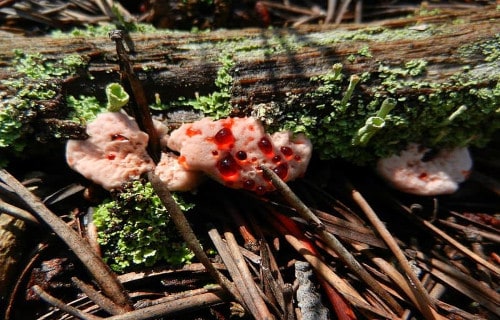
Bleeding Tooth Fungus Physical Description
Most notably, only the emotional shock, and for some, revulsion, at the appearance of the Bleeding Tooth Fungus qualifies as large. The remarkable mushroom itself actually ranks as an approximately average-sized specimen of its kind.
The body of the incredible fungus typically reaches heights measuring about 4.1 in (10.5 cm). At the top of each specimen, a quite irregular shaped cap forms. This may be as much as 8 in (20 cm) across, but most commonly remains somewhat smaller.
This feature generally begins as a comparatively dark, off-white color. However, as this part of the fungus ages, this changes. That part of the fungus then becomes light brown, with darker blotches. But inside, the flesh itself appears as a light brownish-pink.
One of its most extraordinary features is the viscous liquid young specimens exude when moist. This has a dark red pigment, producing the appearance of actually bleeding. This, therefore, serves as the source of the common name of Bleeding Tooth Fungus.
- Kingdom: Fungi
- Phylum: Ascomycota
- Class: Agaricomycetes
- Order: Thelephorales
- Family: Bankeraceae
- Genus: Hydnellum
- Species: H. peckii
Bleeding Tooth Fungus Distribution, Habitat, and Ecology
Remarkably, the awesome Bleeding Tooth Fungus evolved as native to an extremely wide distribution. It appears to be most prevalent throughout the United States, in North America, however. There, its largest concentration grows in the Pacific Northwest.
Yet, this remarkable species also appears across a wide swathe of Europe, though in scattered concentrations. But sadly, its numbers in this part of the globe seem to be dwindling in the central sections. Some believe increased pollution to be the culprit.
Wherever it grows, however, the Bleeding Tooth Fungus typically prefers a specific habitat. It develops on the ground, almost exclusively under various types of conifers. This occurs due to the fact that it evolved a close relationship with such trees.
The mushroom also seems to have a distinct preference for either mountainous or sub-alpine habitats. Therein, the unique marvel thrives best among mosses and accumulated piles of pine needles. It also typically develops under the shade of the canopy.
Dead Man’s Fingers
Dead Man’s Finger’s Facts
- The fifth fungus making its presence known in this article about Fabulous Fungi Around the Globe bears the moniker of the Dead Man’s Fingers.
- The attention-grabbing term it’s typically known by perfectly fits this distinctive fungus. That’s partly due to the fact that it evolved as a saprobic fungus, meaning it thrives among decaying organic matter. Xylaria polymorpha serves as its scientific name.
- The first recorded scientific recognition of this remarkable species occurred in 1797. The renowned German mycologist originally registered that acknowledgement under a different name. At that time, he initially named the fungus Sphaeria polymorpha.
- While some forms of fungi are consumed, that does not hold true for this variety. Although not toxic or technically inedible, very few people attempt to eat them. That’s largely due to the simple fact that the outer covering has a hard, wood-like texture.
- Fortunately for this particular variety of fungus, its population appears to be stable and sufficient. It’s also reasonably wide spread in terms of habitat range. The IUCN, therefore, currently has no listing for it on the organization’s published Red List.
- The Dead Man’s Fingers nonetheless does face certain threats to its continued existence, like most forms of life. Given that it thrives most commonly in forests, deforestation naturally poses a great threat. Climate change also threatens it.
Dead Man’s Fingers Physical Description
It must be also pointed out that the Dead Man’s Fingers tantalizes us with its appearance wholly without relying on sheer physical size. That’s due to the simple fact that it’s not a large species. In terms of dimensions, it represents a roughly average-sized type of fungus.
In fact, its height averages between 1.2 – 3.1 in (3 – 8 cm). Its club-shaped form, meanwhile, develops as thicker at the base than at the top. Each specimen also develops either a single stalk, or multiples. Each further averages between 0.4 – 1.2 in (1 – 3 cm) in diameter.
Initially, the outer surface of the Dead Man’s Fingers appears as either grayish or white. As it matures, however, this changes to black, with tinges of blue or green. It also develops a covering of a fine powder, that becomes more granulated as the specimen matures.
The most immediately noticeable physical characteristic of the fungus, however, remains the one that serves as the source of its common name. That’s because, when a specimen does develop multiple stalks, these generally bear a very strong resemblance to a skeletal hand.
- Kingdom: Fungi
- Phylum: Ascomycota
- Class: Sordariomycetes
- Order: Xylariales
- Family: Xylariaceae
- Genus: Xylaria
- Species: X. polymorpha
Dead Man’s Fingers Distribution, Habitat, and Ecology
Quite surprisingly, at least at first consideration, the bizarre Dead Man’s Fingers has a wide, though broken, distribution. It primarily appears, quite commonly, in fact, across much of mainland Europe. It’s most prevalent, though, in the countries of Ireland and Britain.
The intrepid fungus also appears in another part of the world. More precisely, it also grows in many regions of North America. There, most of its population appears in the United States. Accidental importation by man remains the most likely cause of its presence.
Wherever this visually distinctive species appears, though, like most fungi, it displays decided preferences for its choice of habitat. To be more precise, populations of the Dead Man’s Fingers rarely appear outside of deciduous forests. That’s due to its basic nature.
Being saprobic in nature, it almost always appears on or near the remains of dead trees. Even more specifically, however, these almost always consist of dead beech trees. On the rare occasions it’s spotted on other species, these always consist of other broadleaf types.
This fungus actually plays a vital role within the ecosystems it appears in. It consumes the compounds that bind the fibers of the wood together. As a result, the countless numbers of local insect species are able to feast on the rest of the remains of the tree far more readily.
Icicle Mushroom
Icicle Mushroom Facts
- Now finding its place among these Fabulous Fungi Around the Globe comes the remarkable species that goes by the named of the Icicle Mushroom.
- Perhaps most notably, this notably distinctive term serves as the common name for any of the fungi in the genus Hericium. Regardless of its unusual appearance, though, all known members of this genus remain edible, though tastes differ.
- The common name understandably derives from the obvious resemblance of its structure to hanging icicles, or, in the minds of some, cave-based stalactites. For the moment, researchers classify a total of four species within this fascinating genus.
- The different members of this interesting genus also bear other, rather colorful, common names. These distinctive monikers include the lion’s mane, the bear’s head, and the monkey’s head, to go along with their respective scientific names.
- The first known scientific description of these visually distinctive mushrooms further came at the hands of the South African mycologist, Christian Hendrick Persoon. Quite surprisingly to some, he actually made this identification in 1794.
- The Icicle Mushroom does have some commercial uses, though. In some portions of the world, this remarkable fungus can be also found in extensive cultivation as a food source. This usage of it most notably takes place in the country of China.
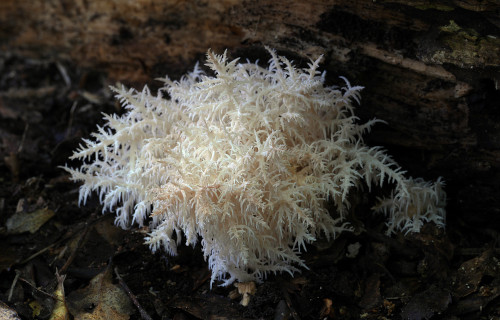
Icicle Mushroom Physical Description
Given that there multiple forms of the Icicle Mushroom exist, one fact understandably stands out. That’s because certain physical differences quite naturally exist between them. Some of these characteristics nevertheless remain true to them all.
Firstly, the stalk of the fascinating mushroom variety itself remains relatively short. Secondly, it most commonly attaches itself to a tree via its spines. Mature specimens can also be easily distinguished from other varieties by the numerous drooping spines.
Depending on the exact variety of Icicle Mushroom, a third shared trait remains. That’s because these spines may grow either rows or in large clusters. Unlike many types of mushrooms, this form develops no cap. Its coloring typically remains white or whitish-gray.
- Kingdom: Fungi
- Phylum: Basidiomycota
- Class: Agaricomycetes
- Order: Russulales
- Family: Hericiaceae
- Genus: Hericium
Icicle Mushroom Distribution, Habitat, and Ecology
The various forms of the Icicle Mushroom thrive in most temperate and tropical portions of the world. The greatest number of species evolved in three specific regions of the world, however. This makes it among the mosts widely spread of fungi.
More specifically, these zones of habitation consist of the widespread continents of Asia, South America, and North America. However, wherever the wonder appears, its habitat type should come as no surprise to anyone familiar with mushrooms.
That’s because, as remains the case for related species, this type of fungus also prefers to grow in dark, comparatively moist locations. Most commonly, though not exclusively, this variety of mushroom appears on the trunks of dead or dying trees.
When, as remains typical, the Icicle Mushroom appears on the trunks of dead trees, a somewhat unexpected pattern manifests itself. That holds true due to a distinctly uncommon fact. That’s due to the fact that it usually grows close to the top.
For the moment, the precise reason for this preference of placement remains a mystery to researchers. Ongoing research may one day change that, though. This fungus also plays a key role in folk medicine throughout Asia, most notably in Japan and China.
While all known varieties remain edible, those native to China and North America generally rank as the most palatable. The greatest consumption of this particular type of mushroom occurs in China. It remains rarely consumed outside of this region.
Mycena Chlorophos
Mycena Chlorophos Facts
- Holding down the seventh spot in this article about Fabulous Fungi Around the Globe is the astoundingly evolved variety named Mycena Chlorophos.
- This truly extraordinary variety of fungus remains known to researchers by its relatively unassuming scientific name. For the moment, unlike most species known to man, the remarkable species has no generally accepted common name.
- Only the name of the awesome fungus fails to impress those who encounter it or learn of it, however. This fascinating fungi actually represents one of the handful of known related species that actually displays a natural luminescence.
- The first recorded scientific description of the Mycena Chlorophos occurred in the year 1860. This occurred as a result of the combined efforts of the English researcher Miles Berkeley, and the American botanist, Moses Ashley Curtis.
- Quite unfortunately, scientists still do not know a significant amount about this incredible work of Nature. This regrettable lack of knowledge occurs due to a combination of it short duration and highly limited territorial range.
- Currently, the IUCN has no listing for it on its Red List of Threatened Species. The marvel does, however, face several serious threats to its existence. Although habitat loss remains a danger, its greatest peril most likely stems from climate change.
Mycena Chlorophos Physical Description
Regardless of its other claim to fame, the Mycena Chlorophos represents a comparatively small variety of mushroom. Thankfully, though, Nature often demonstrates that physical size as absolutely no bearing on the impressiveness of its many distinctive creations.
The height of its rather thin stalk actually varies quite significantly, measuring from 0.2 – 1.2 in (6 – 30 mm). Its cap, meanwhile, also ranges in size over a broad range. But, this portion of it typically does not exceed roughly 1.2 in (30 mm) in total diameter.
The same cap also possesses a thin coating of a harmless, though surprisingly sticky, substance. The most notable feature of the Mycena Chlorophos, however, obviously remains its naturally occurring luminescence. This presents as a pale green.
It also holds one more fascinating, if somewhat unpleasant, characteristic. This unique wonder of evolution emits a comparatively strong odor of ammonia. Due to the presence of this particular scent, the relative edibility of this fungi remains in question
- Kingdom: Fungi
- Phylum: Basidiomycota
- Class: Agaricomycetes
- Order: Agaricales
- Family: Mycenaceae
- Genus: Mycena
- Species: M. chlorophos
Mycena Chlorophos Distribution, Habitat and Ecology
The Mycena Chlorophos grows endemically only in a very limited area of the world. This consists of certain portions of subtropical Asia. More precisely, these sections include the countries of Taiwan, Polynesia, Japan, Sri Lanka, and the island of Java in Indonesia.
To the amazement of some, this mushroom also grows in completely different parts of the globe. In fact, these alternate zones include small portions of Brazil and Australia. However, experts believe that humans accidentally transported it to those locations.
Most fortunately for it, the Mycena Chlorophos has another trait working in its favor. Within these widely different ranges, the species appears to have evolved as highly adaptable. As a result of this evolutionary advantage, it may be found in a variety of forest habitats.
Wherever it appears, though, it nonetheless displays a decided preference for a specific environment. That’s due to the fact that it appears almost exclusively among areas of woody debris. This most commonly includes pieces of fallen bark, branches, and twigs.
The trademark bioluminescence for which it remains best known, however, doesn’t last very long. In point of fact, it’s most pronounced when the mushroom first develops. Afterward, the eerie glow slowly fades over a period that typically measures roughly 72 hours.
Phallus Indusiatus
Phallus Indusiatus Facts
- In this spot in this listing of Fabulous Fungi Around the Globe comes the one with perhaps the most startling characteristic, the Phallus Indusiatus.
- The attention-grabbing term for this intriguing species serves as the scientific name for a fascinating variety of mushroom. This remarkable, and in some ways quite controversial, fungus, also goes by several other names, however.
- These include such terms as the bamboo pith, bamboo mushroom, veiled lady, crinoline stinkhorn, and the long net stinkhorn. Regardless of which of these distinctive names one uses for it, though, the fungus represents a most unusual species.
- That holds true due to the amazing existence of an entirely coincidental natural attribute it developed in the course of its evolution. When exposed to its natural aroma, some women experience spontaneous orgasms!
- The first recorded scientific recognition of the Phallus Indusiatus as a separate species took place more than two centuries ago. Occurring in 1798, this took place as the result of the efforts of the French botanist Etienne Pierre Ventenat.
- For the moment, the IUCN has no listing for this species on its Red List of Threatened Species. It nonetheless faces potential threats to its continued existence. Like many other species around the world, it’s vulnerable to climate change.
Phallus Indusiatus Physical Description
The Phallus Indusiatus remains well known for more than just its distinctive aroma. It’s also an impressive specimen in terms of sheer physical size. In point of fact, this work of Nature possesses some highly respectable physical dimensions.
Mature examples of this intriguing variety frequently attain a height measuring as much as 10 in (25 cm). The large bell-shaped cap itself also boasts a respectable size. This part of the unique marvel reaches an average width of approximately 1.6 in (4 cm).
Yet the cap has other qualities to fascinate one than simply mere size. This feature further produces copious quantities of a green slime, containing its spores. This viscous fluid tends to attract large numbers of insects, including flies, who then spread the spores.
The Phallus Indusiatus also produces yet another distinctive feature. That’s a rather wide, and somewhat lacy, skirt. In color, meanwhile, the stalk generally displays a bright white color. The cap, though, most often shows either a light or dark brown shade.
- Kingdom: Fungi
- Phylum: Basidiomycota
- Class: Agaricomycetes
- Order: Phallales
- Family: Phallaceae
- Genus: Phallus
- Species: P. indusiatus
Phallus Indusiatus Distribution, Habitat, and Ecology
Quite fortunately, the Phallus Indusiatus inhabits a wide swathe of the globe. Its greatest concentrations appear in parts of the continents of Africa and South America. But this natural wonder also grows, if in smaller numbers, in Mexico and portions of Asia.
Sadly, though, its overall numbers remain relatively low. That’s because, while it appears in many regions, its density in each of them is thin. It primarily appears in regions of tropical forest, but will grow opportunistically in gardens if the soil is rich enough for it.
It’s also edible, and commonly appears in Oriental cuisine. Sadly, it doesn’t last long, typically only appearing for about 3 days. Research further shows that this fungus also holds numerous chemical compounds with valuable medicinal properties.
But the compound of greatest interest to most remains the one that creates its astounding effect on women. The sexually stimulating effect for which it’s best known remains inconsistent, however. In studies, only 37.5% of females experienced the amazing result.
In lab tests, the Phallus Indusiatus also required strong concentrations. With smaller dosages, though it failed to create the controversial effect, it caused elevated heart rates. Men, meanwhile, found the aroma unpleasant, and experienced no physiological effects.
Amethyst Deceiver
Amethyst Deceiver Facts
- The ninth creation of Nature appearing in this compendium of Fabulous Fungi Around the Globe is the dazzling Amethyst Deceiver.
- The picturesque and descriptive term typically aplied to it serves as the generally accepted common name for a remarkable variety of mushroom. Its scientific name, however, remains the difficult to pronounce Laccaria amethystina.
- By either of these names, though, it’s a fungus with what some people humorously consider to be a psychological problem. That would be a confusing personality. That’s due to the fact that this marvel of Nature actually changes its color as it ages.
- As a result of this trait, it can sometimes be difficult to identify. This also serves as the source of the common name. The first scientific description of it occurred in 1778, as a result of the work of the respected English botanist William Hudson.
- Although it does appear in the Catalogue of Life, the IUCN currently has no listing for the Amethyst Deceiver. The fungus nonetheless faces several threats to its existence. Its greatest threat, though, likely comes in the form of climate change.
Amethyst Deceiver Physical Description
While this remarkable species easily impresses many people, the Amethyst Deceiver does not do so due to physical size. Regardless of its many other wonderful qualities, this wonder of evolution only ranks as an average-sized form of mushroom.
Its stem, which develops as quite fibrous, as well as hollow, generally attains a maximum height of about 2.76 in (7 cm). The cap of the unique fungus typically grows to around 2.25 in (6 cm) in diameter, and boats a small depression in the center.
Overall, the Amethyst Deceiver begins its life with a comparatively concave structure. This, however, flattens out with age. In color, the stem usually displays a lighter shade, closer to lilac. The cap, though, displays the famous purple, but it lightens as it ages.
The great majority of individual specimens also display a fascinating pattern of striations. These most commonly appear along the edges of the cap, and display an even paler shade. Its interior flesh possesses neither a discernible scent or color.
- Kingdom: Fungi
- Phylum: Basidiomycota
- Class: Agaricomycetes
- Order: Agaricales
- Family: Hydnangiaceae
- Genus: Laccaria
- Species: L. amethystina
Amethyst Deceiver Distribution, Habitat, and Ecology
Fortunately, the Amethyst Deceiver evolved as native to a surprisingly wide swathe of the world. In point of fact, it appears in specific regions of Asia, Europe, North America, and South America. The majority of populations appear in northern regions, though.
It also shows a unique versatility in terms of its habitat type. That’s due to the fact that it appears in both deciduous and coniferous forests. The species, does, though, display a pronounce preference for temperate zones within this same geographical range.
Even more amazingly, a minor mystery presently exists regarding its most common choice of habitat. For reasons that still mystify researchers, most specimens appear in the immediate vicinity of certain types of trees. These consist of both beech and oak trees.
As with all mushrooms, the Amethyst Deceiver reproduces via spores. In its case, though, these develop as relatively large in size. It remains undetermined if this fact accounts for its tendency to appear only singly or in small groupings in any one location.
Though not commonly eaten, since most consider its flesh tasteless, it nonetheless remains edible, but only technically. This confusing state exists due to a surprising fact. Most often, individual specimens actually qualify as relatively toxic in nature.
Its own genetic structure contains no known toxic compounds. However, it also remains extremely sensitive to any naturally occurring arsenic in the soil in which it appears. When this is present, the mushroom absorbs it into its flesh, rendering it toxic as well.
Fabulous Fungi Around the Globe
We truly hope that each of you greatly enjoyed reading, and hopefully learning from, this article about these Fabulous Fungi Around the Globe. It’s also our sincere hope that doing so has left you with either a new or renewed appreciation for such wonders of Nature.
Unfortunately, many other such species around the world now find themselves facing threats to their continued existence. Many of those dangers, in fact, stem from the actions of mankind. We must each do all we can to protect and preserve them all.
Check out our other articles on 5 Captivating Plants of Canada, 3 Spectacular Marvels of Spain, 7 Awesome Invertebrates of Australia, 6 Prominent Animals of Peru
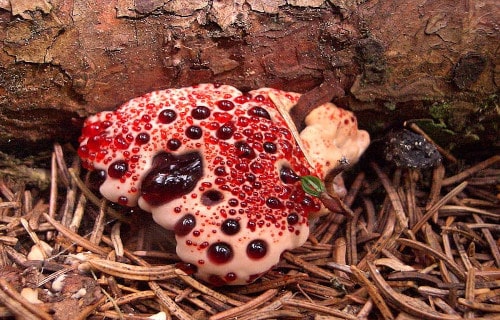
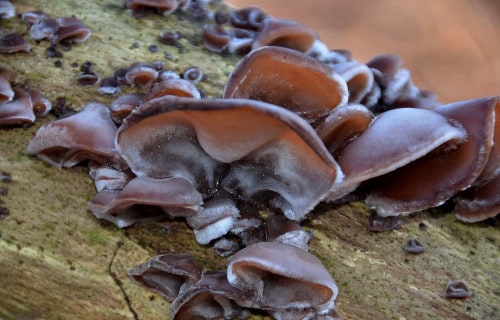
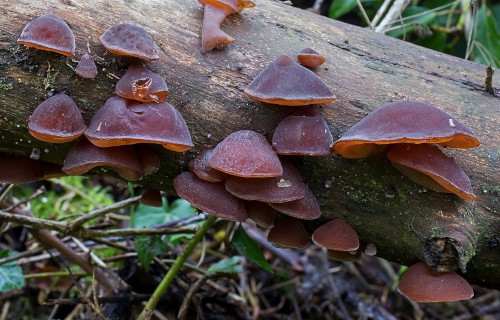
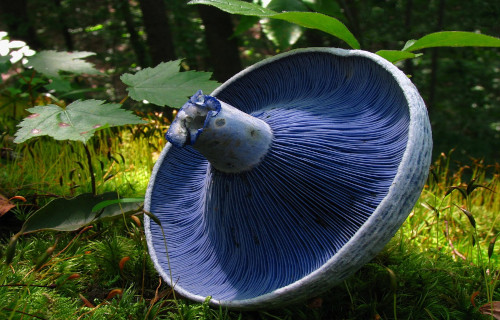
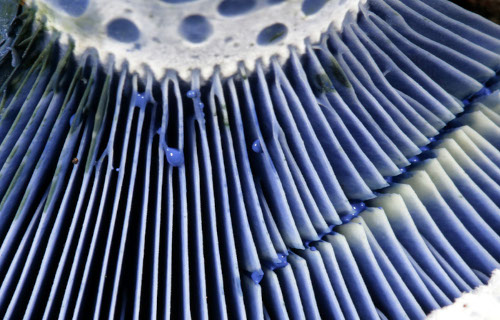
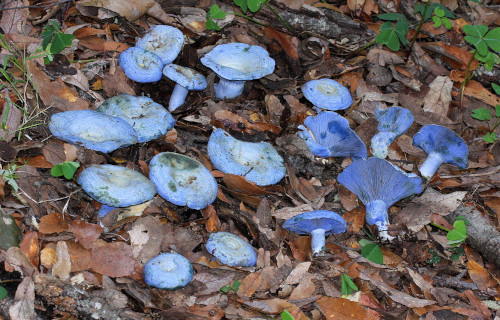
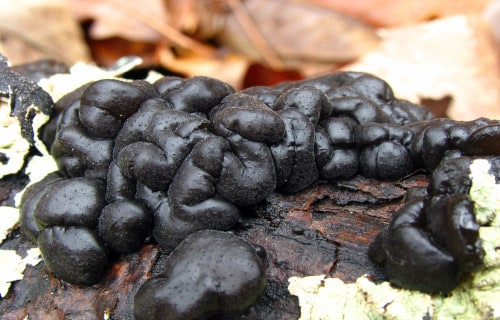
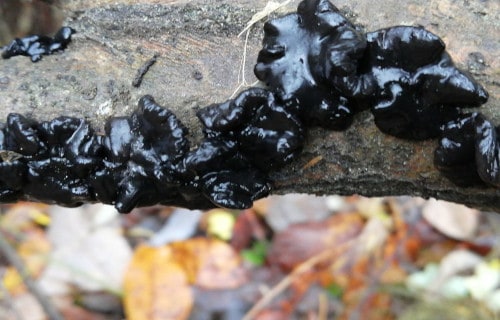
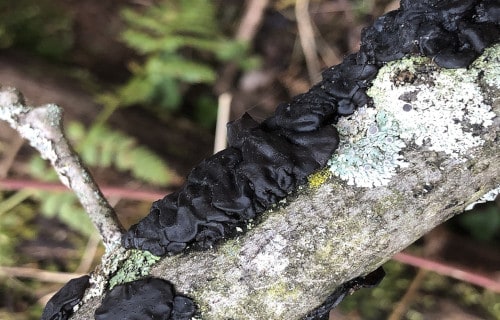
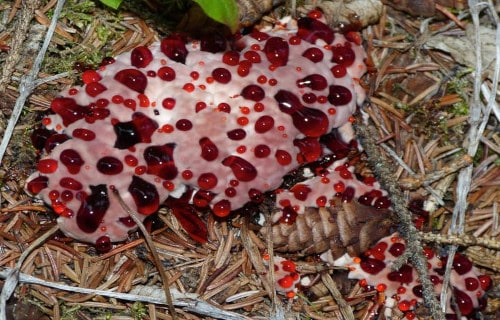
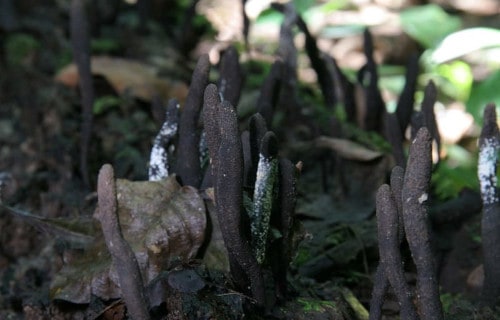
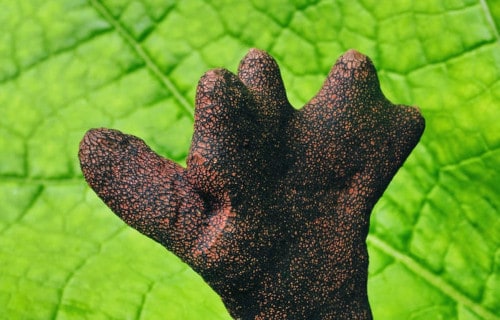
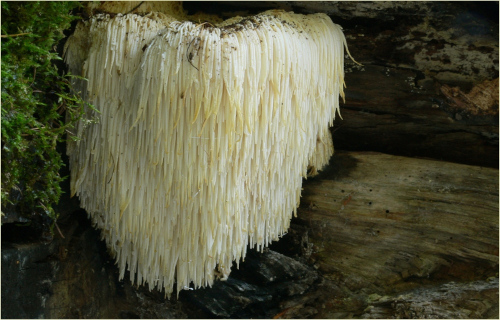
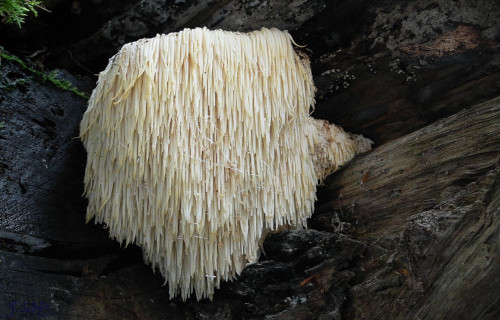
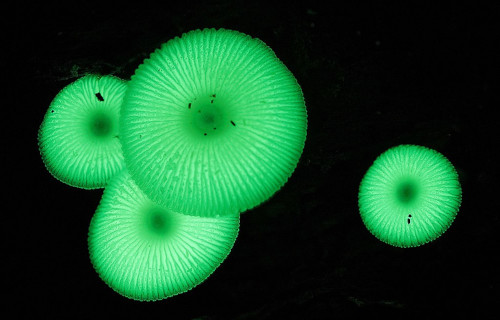
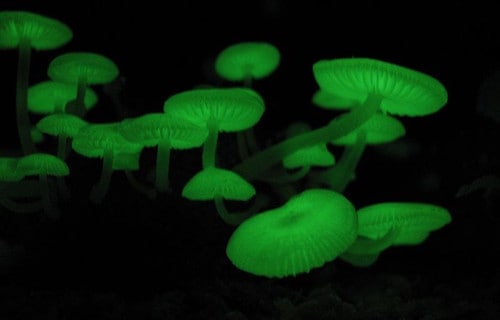
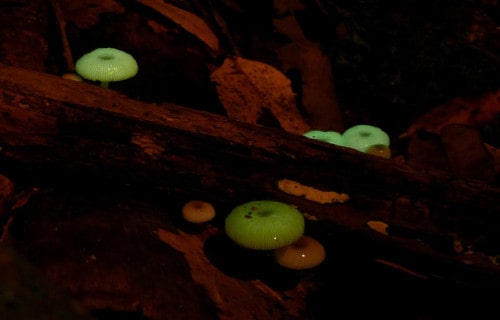
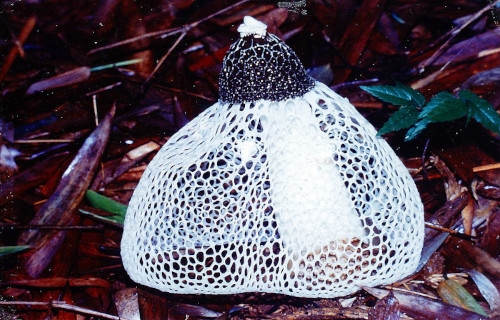
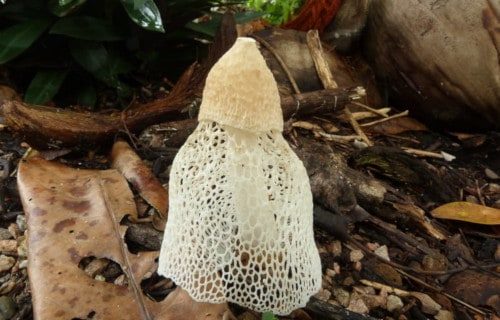
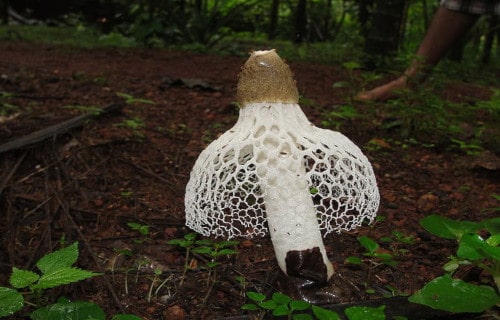
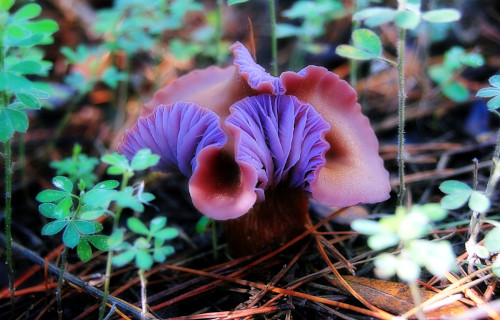
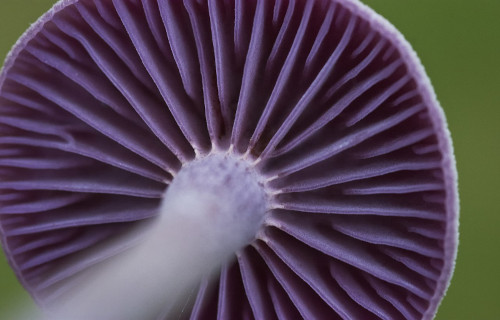
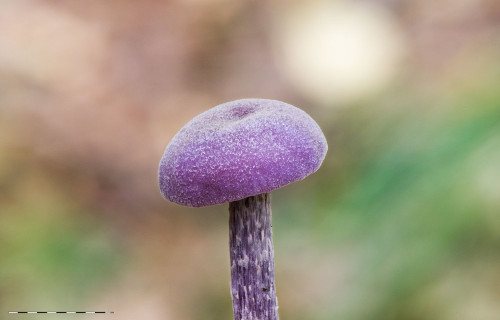









The first photo of “jelly ear” is misidentified, it’s not Auricularia, it’s a species of Exidia (“amber jelly roll”).
Hello Jingjong,
Thank you for that clarification. We apologize for the mistake, which has now been corrected. We rely on legitimate, credible sources ourselves, but even they make mistakes!
Sincerely,
OBP